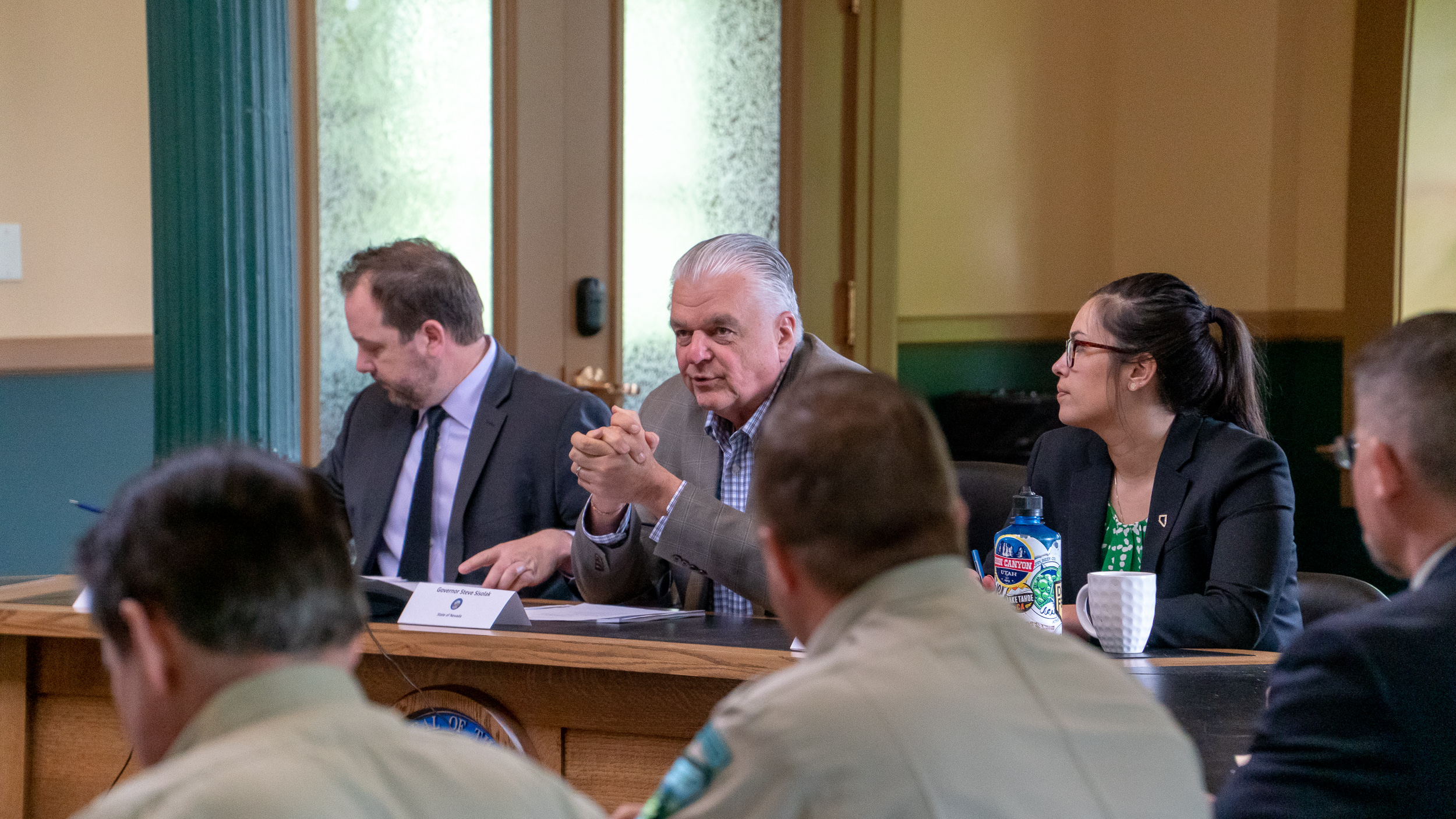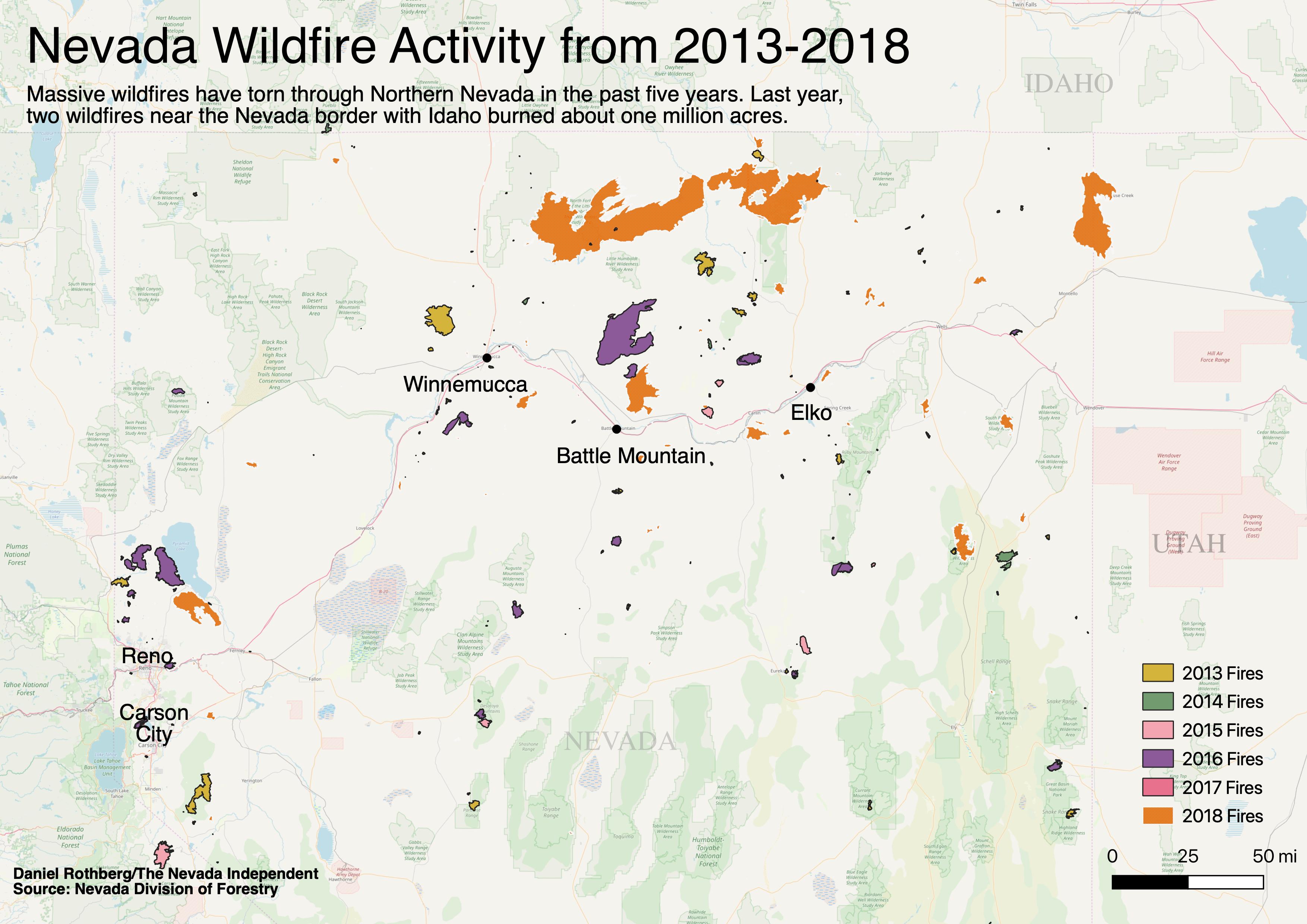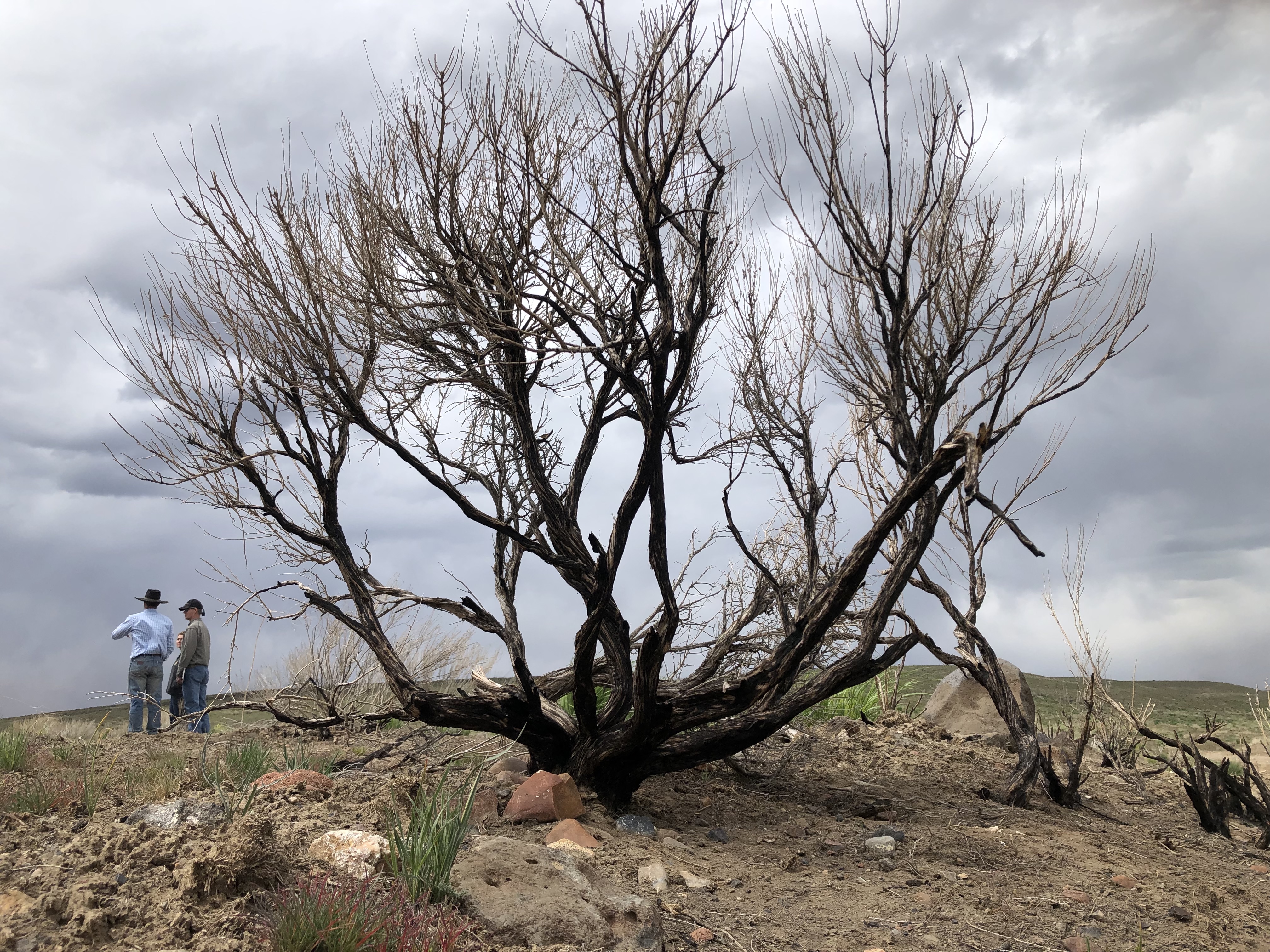Land managers brief Sisolak on wildfire threat, say winter precipitation is a double-edged sword

After months of heavy precipitation, state and federal land managers told Gov. Steve Sisolak on Tuesday to expect a slower start to the fire season but warned that despite rain and snow, the state still faced a threat. In fact, they said precipitation could make the season worse, speeding up the growth of flammable invasive grasses that have fueled recent megafires across the state.
Like many Western states, Nevada is experiencing an increase in wildfire activity. State Forester Kacey KC said an average of 500,000 acres burned annually between 2000 and 2018, more than double the amount of land that burned in the two decades prior. KC said the wildfire activity, in part, can be attributed to a changing climate that is driving more extreme weather.
“We are susceptible to fire year round,” KC told the governor at his first wildfire briefing.
Although climate is a driver, it is not the only factor for why the state is experiencing more fire. As more homes are built closer to wilderness, wildfire risks and costs have increased. And across the Great Basin, well-adapted invasive grasses are crowding out native species and providing fuel for fast-moving fires that burn for miles. Of the 2.3 million acres of land that burned in Nevada last year, the majority of those fires burned on public land in the state’s interior sagebrush sea.
“The most concerning [thing I heard] is they are expecting severe wildfire conditions, both North and South,” Sisolak told reporters after the briefing. “Precipitation led to a lot of that. There is a lot of undergrowth coming up. And you can’t sit in front of the [reduction] of some of that fuel. And hopefully they will be able to get a better handle on it and get further out in front so we can knock it out right there and make the damage much smaller.”

Several heavy storms this year brought above average precipitation to most basins in Nevada. But it’s too early to say definitively what that might mean for the water season, land managers said Tuesday.
KC pointed to past experience. In good water years for the Humboldt River, which runs along the I-80, state officials have often observed intense wildfire activity, KC said, adding that good precipitation, by spurring the growth of grasses, can generate fuel for several seasons.
One of the biggest threats driving wildfire is cheatgrass, an invasive species that has overtaken large swaths of what used to be sagebrush habitat in the Great Basin. Cheatgrass was a main driver of the human-caused Martin Fire, which broke out near Winnemucca after July 4th last year and became the state’s largest single fire in history, burning more than 400,000 acres.
Paul Peterson, a state fire management officer with the Bureau of Land Management, said the agency is focused on using tools, such as fuel breaks, to slow wildfires and make them smaller. Federal land managers create fuel breaks by removing vegetation on often-wide strips of land. Some public land users have questioned fuel breaks since they further disturb the landscape.
“What we see with an increase in precipitation is an increased grass load, and we know that grass carries fire,” Peterson said. “So we know that from a precipitation standpoint. After that fuel cures toward the latter part of June, some of the prediction models we are seeing right now is that we are going to have more storms coming through, which creates more lightning.”

Although most fires occur in Northern Nevada and along the I-80 corridor from Winnemucca to West Wendover, KC said the largest threat identified in their outlook this year was in Southern Nevada, where an invasive species, known as red brome, has spread. According to the outlook compiled by the National Interagency Fire Center, fire potential in the rest of the state is normal.
Fighting fire — and preventing its recurrence — is resource-intensive, and in Nevada, it means coordinating with a variety of governmental entities. About 86 percent of the state is managed by the federal government, which has limited funding to fight rangeland fires. Two back-to-back fire years this biennium stretched the state’s annual $2.5 million fire suppression budget thin.
As a result, the state has received additional funding allocations of about $17.6 million from the Interim Finance Committee, statutory contingency and grants. The governor asked to increase the budget to $4 million per year over the biennium and a joint budget subcommittee approved a slightly increased budget tied to a five-year average. The committee also approved $10 million for a contingency account so the department could pay off lingering liabilities from past wildfires.
The Legislature is still considering Assembly Concurrent Resolution 4 to create an interim committee studying fire. KC said the Legislature has still not acted on some infrastructure requests, but the increase in the firefighting budget would help the agency in future years.
“Unfortunately, I don’t think the cost of fire is going to go down,” she said.

Costs have been increasing, KC said, as fires have increased over the past several decades and fighting them has been more complex, especially if they erupt in the growing wildland-urban interface. That’s an especially big issue in Northern Nevada, around Reno and Lake Tahoe.
Throughout the briefing, Sisolak asked questions of the land managers. At one point, Sisolak asked about who was not at the meeting: tribes. He said their absence was “noticeable” and asked how they were involved in the process. He was assured they receive similar briefings.
Talking to reporters after the briefing, Sisolak emphasized the importance of education. Last year, 56 percent of the state’s fires were caused by human ignitions. Fires can be caused by runaway campfires, embers or even hot vehicles when they are pulled off to the side of the road.
“When you see how many of these are human-caused, it gives you pause,” Sisolak said. “We need to do more to make sure more people understand that."
